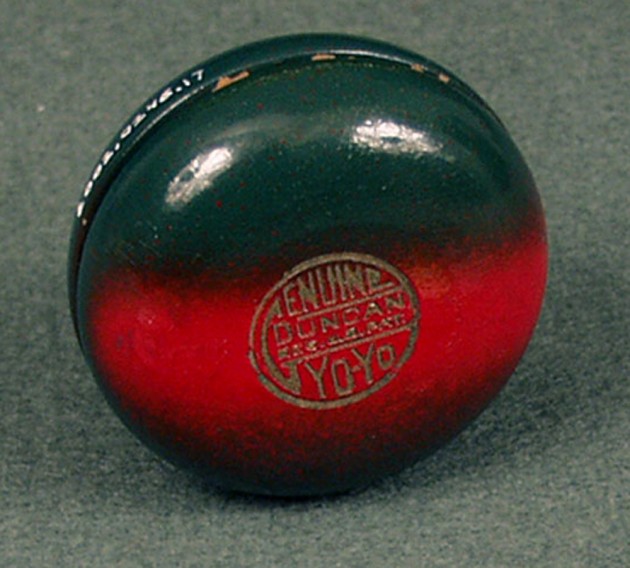Duncan Genuine Yo-Yo, 1930s
America owes its fascination with the yo-yo mainly to Chicago businessman Donald F. Duncan Sr., who spotted it while on a business trip to San Francisco in 1928. It was being used by Pedro Flores, a Philippine immigrant who began selling a toy labeled with the name, “yo-yo,” meaning “come-come” in the native language of the Philippines.
By early 1929, Flores had secured financing, set up his own firm and manufactured more than 100,000 wooden toys and trademarketed the name “yo-yo.” Flores realized that people had to be shown how to use a yo-yo before they would buy it. He hired a team of fellow yo-yo masters to demonstrate the toy’s amazing tricks.
Duncan, a marketer, entrepreneur and manufacturer of wooden novelty items and toys, immediately recognized the yo-yo’s potential as a popular new toy. He quickly raised $5,000 to purchase initial rights to the yo-yo from Flores and founded Donald F. Duncan Inc. By October 1932, he had secured Flores’s remaining assets, including the all-important trademark. Until the trademark expired in 1965 and competing plastic yo-yos began to outsell his old-fashioned, wooden ones, Duncan was the country’s leading yo-yo producer.
This wooden yo-yo was made by the Duncan Toys Company in the 1930s. It has a green design with a broad red stripe. The seal reads “Genuine Duncan Yo-Yo, Reg. US Pat.” This was an early version of the Duncan Genuine Yo-Yo, produced soon after Duncan bought the trademark term “yo-yo” from Flores. This yo-yo’s seal is reminiscent of the one used by Flores.
This item is one of 137 million artifacts, works of art and specimens in the Smithsonian’s collection. It is not on display.






